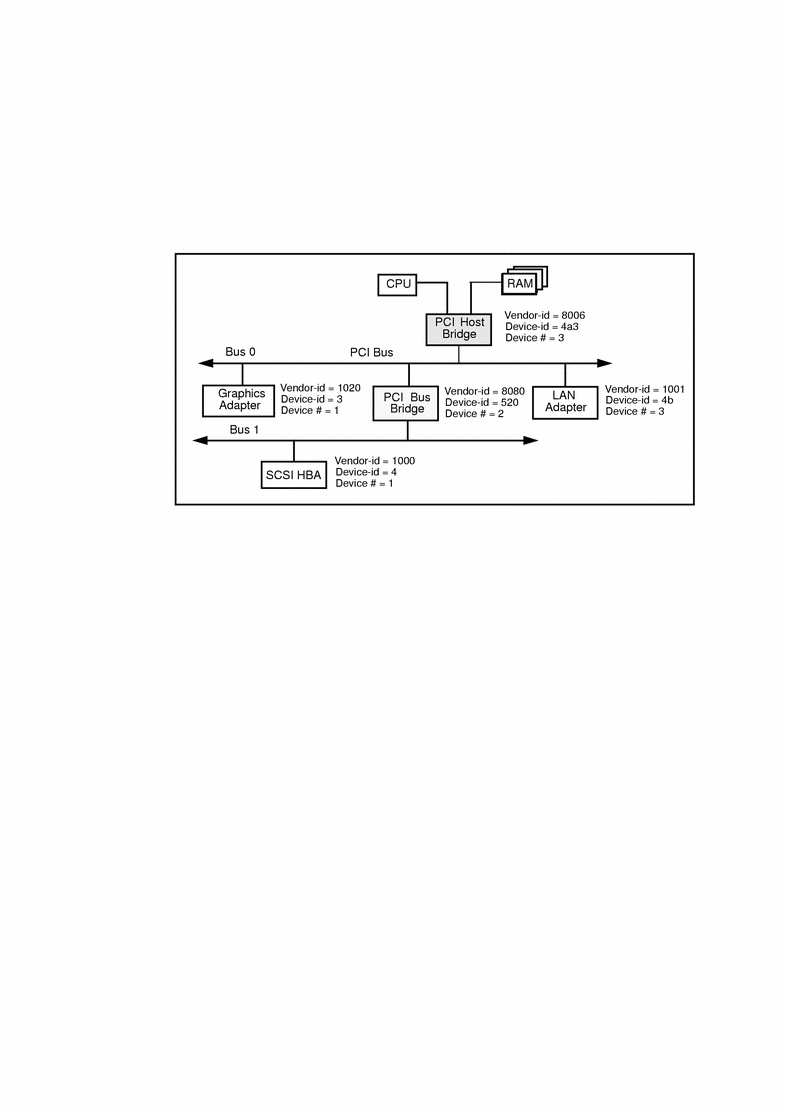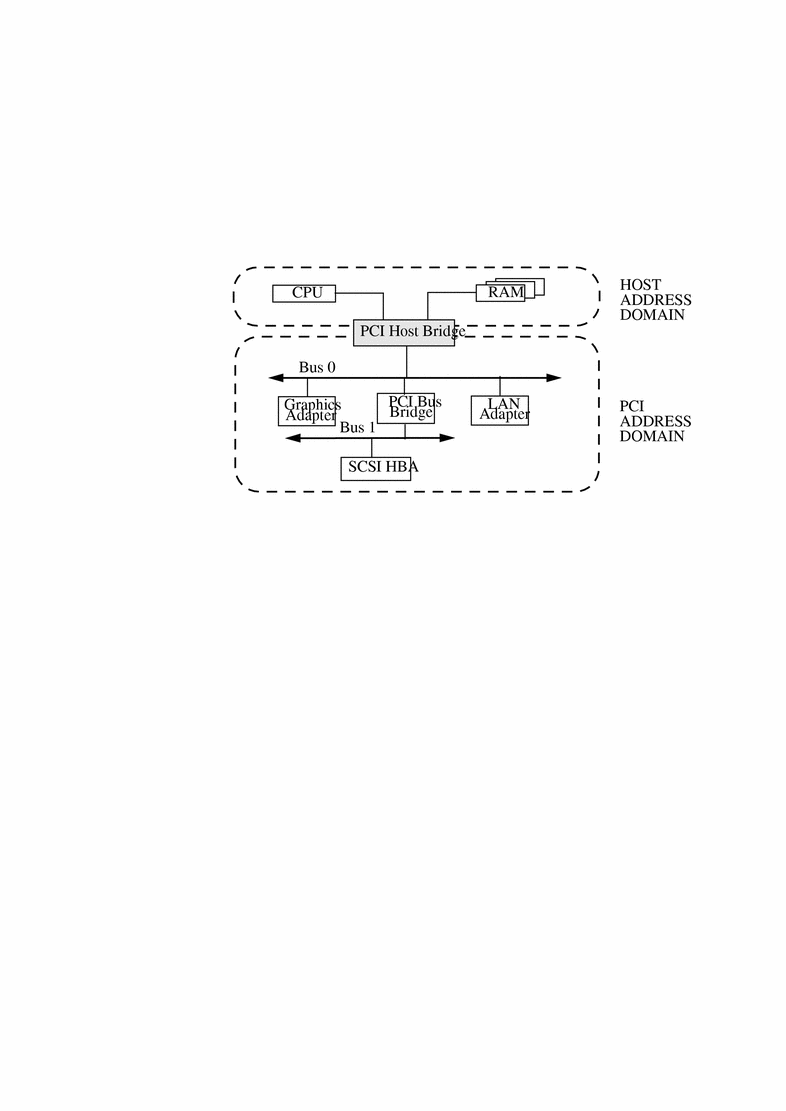PCI Local Bus
The PCI local bus is a high-performance bus designed for high-speed data transfer. The PCI bus usually resides on the system board and operates at speeds close to those of the host processor. The PCI bus is normally used as an interconnect mechanism between highly integrated peripheral components, peripheral add-on boards, and processor or memory systems. The processor, main memory, and the PCI bus itself are connected through a PCI host bridge, as shown in Figure 2-1.
A tree structure of interconnected I/O buses is supported through a series of PCI bus bridges. Subordinate PCI bus bridges can be extended underneath the PCI host bridge to allow a single bus system to be expanded into a complex system with multiple secondary buses. PCI devices can be connected to one of these secondary buses. In addition, other bus bridges, such as SBus or ISA-bus, can be connected.
Every PCI device has a unique vendor ID and device ID. Multiple devices of the same kind are further identified by their unique device numbers on the bus where they reside.
Typical PCI devices include SCSI adapters, graphics and display adapters, host bus adapters, network controllers, and so on.
Figure 2-1 Machine Block Diagram

The PCI host bridge provides an interconnect between the processor and peripheral components. Through the PCI host bridge, the processor can directly access main memory independent of other PCI bus masters. For example, while the CPU is fetching data from the cache controller in the host bridge, other PCI devices can also access the system memory through the host bridge. The advantage of this architecture lies in its separation of the I/O bus from the processor's host bus.
The PCI host bridge also provides data access mappings between the CPU and peripheral I/O devices. It maps every peripheral device to the host address domain so that the processor can access the device through memory mapped I/O or special I/O instructions. On the local bus side, the PCI host bridge maps the system memory to the PCI address domain so that the PCI device can access the host memory as a bus master. Figure 2-2 shows the two address domains.
Figure 2-2 Host and Bus Address Domains

- © 2010, Oracle Corporation and/or its affiliates
